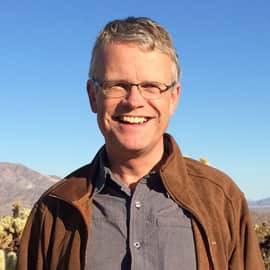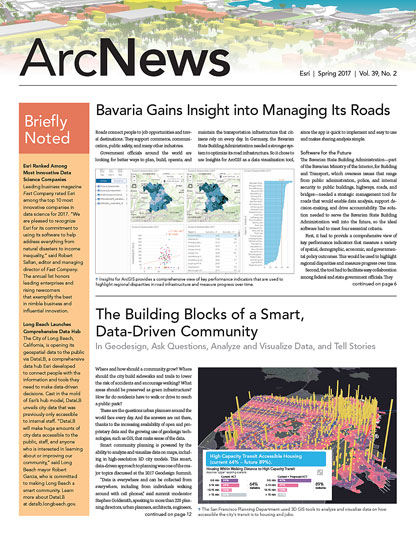The Relevance of Cartography: A Cartographer’s Perspective
A column by Menno-Jan Kraak, President of the International Cartographic Association
These days, we are repeatedly confronted with opinions that are not based on true facts. This is not necessarily new, but it is disturbing. What worries me most is that the expression, “science is just another opinion,” is gaining popularity. It allows people to ignore evidence and well-founded arguments.
So, what about maps? Are maps based on facts? Do maps make authoritative statements beyond a doubt?
Mark Monmonier’s book, How to Lie with Maps, is not very helpful here, since it can be interpreted as a crash course on how to misuse maps. Monmonier encourages readers to have “a healthy skepticism of maps” and to look at them with wary eyes. Rightfully so? Yes, and no.
As a cartographer, I do know that there are limitations. Sometimes cartographers do not (yet) know everything about a particular area or topic, so we interpolate and extrapolate the data to create a clear map. This was the case, for instance, with early explorers’ maps of coastlines. It also happens with today’s weather maps, which interpolate weather patterns based on measurements—including wind and rain—taken at weather stations. And on soil maps, lines may demarcate different soil types, but there is seldom an abrupt change between clay and sand; rather, there is usually a transition zone.
Sometimes, before data is displayed on a map, it is processed in several ways according to different formulas, which can result in varied patterns for the same set of data. A simple example of this is a population density map for all the municipalities in a country. The data can be broken up based on different classification methods, such as equal interval, which divides data into equal-sized subranges, or standard deviation, which emphasizes values above and below the average. It can also be divided using different numbers of classes—splitting a hundred observations into two classes versus four classes, for example.
In all these situations, we cartographers do not consider these representations to be lies, since the results are created using reliable and renowned methods. We do realize, however, that different outcomes exist. As I have written in a previous column, even a topographic map, which might seem neutral enough, can impose different perspectives on the landscape, depending on the map reader’s background. A geologist, for example, uses a map to find fault lines, while a trail runner uses the same map to plan out running routes. Again, cartographers do not consider different uses of the same map to be wrong. It actually corroborates the universality of maps.
Still, I always warn my students to be alert and to try to find out why maps look the way they do. Perhaps the reasoning for why a map was designed a certain way can be reconstructed.
On the other hand, Monmonier certainly did not write his book in a vacuum; there are problems with how some maps display their information. Sometimes it is due to ignorance (using software defaults can contribute to this), whereas sometimes a mapmaker manipulates the data on purpose. During wartime, for example, a cartographer may mark dangerous areas in green and safe zones in red to throw off the enemy, since red is usually associated with risk, while green tends to symbolize safety. Or a cartographer may deliberately misplace objects on a map to mislead an adversary. If you are aware of these intentional deceptions, however, you can try to deal with them.
Worse is when a cartographer tries to justify his or her methods, but the map falls into the hands of conspiracy theorists. Then, the case is lost. I ended up in a situation like this recently. During an interview on CNN, in which I was asked to comment on the use of the Mercator projection, I did my job—if naïvely—by explaining what it is (a cylindrical map projection with severe distortions at the poles), why it had been created (for navigation), when it shouldn’t be used (as a wall map in a classroom), and why it is used by map servers all around the globe (because its perpendicular longitude and latitude lines make it easy to convert these into map tiles). It was a very factual explanation, in my opinion. But during the interview, I was positioned opposite a more activist interpretation that says the Mercator projection downplays Africa. I tried, even more naïvely, to convey my point: No, Africa is actually quite okay, I said. It is the polar regions that are in trouble. And, damage done. Although CNN created some very nice interactive graphics that compared the different projections, the segment resulted in headlines appearing on conspiracy websites—which I do not frequent, by the way—that claimed, “ICA Admits Western Cartographers Deliberately Shrunk Africa,” and, “Africa Map Fakery Admitted by Int’l Cartographer’s [sic] Assn.”
Of course, this is not the first time people have viewed maps as dark instruments being used by untrustworthy governments. But in my opinion, the conspiracy websites walked away with my facts and gave them an interpretation I would not have dreamed of. Even though my colleagues’ reactions were heartening—”Ahh, they’ve discovered Mercator again; it happens every decade”—I did not feel happy.
Scientists always start from the back in discussions like these. That is because we see nuances and make qualifying statements—”Yes, but…” or, “No, because….” It seems that not only do people want black-and-white answers, but they also want to give them a special twist.
Even so, it is worth making maps based on facts. Applying the appropriate cartographic methods that allow any (sensible) user to understand a place or situation will always give people more context and open up true facts for further use.
About the Author
Menno-Jan Kraak is professor of geovisual analytics and cartography at the University of Twente in the Netherlands, where he has been teaching since 1996. He has a degree in cartography from the Faculty of Geographical Sciences at Utrecht University and received his PhD in cartography from Delft University of Technology. Kraak has written extensively on cartography and GIS. His book Cartography: Visualization of Spatial Data, written with Ferjan Ormeling, has been translated into five languages. He also wrote Mapping Time: Illustrated by Minard’s Map of Napoleon’s Russian Campaign of 1812, published by Esri Press in 2014. Kraak is a member of the editorial boards of several cartography journals, including the International Journal of Cartography. He currently serves as president of the International Cartographic Association.
Read other articles in “The Relevance of Cartography” series.


